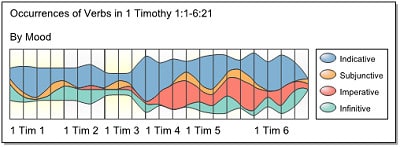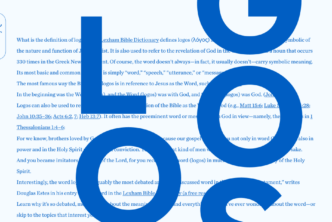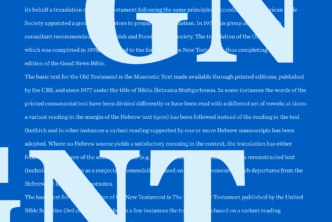Earlier, I wrote an article titled Visual Filters and Verb Rivers (Part I) in which I described the use of a particular visual filter, the Morphology Filter in the Biblical Languages Addin.
That article got long, and I promised to follow it up later. Well … it’s later. And this is the follow-up.
The Morphology Filter is good for word-level and paragraph-level work. That is, when you are reading through the text and noticing morphological trends, the Morphology Filter helps these sorts of things jump out at you.
Upon noticing what seems to be a concentration of a particular morphological criteria in a particular paragraph or section, the next question is: Does this happen elsewhere in the book, or is this unique? In other words, with the Morphology Filter, you’re looking at the trees (or perhaps a particular grove of trees). But you need to step back and look at the whole forest now. This is what Verb Rivers help you to do.
(Holding back the urge to mix metaphors and crack a joke about going “over the river and through the woods” … )
Now that we’ve noticed this concentration of imperative verbs in First Timothy, we have a few options. We could, with our Morphology Filter enabled, scroll up and down and start to mentally count instances of imperatives, and which verses they occur in, and chart them out ourselves. Or, we could realize we’re in the 21st century now, and have the computer do it.
Verb Rivers let the computer do it.
The Verb River dialog lets us specify a passage and a mix of morphological criteria. Using this information, the computer will build a picture of the information it gathers for the specified passage. Like this:
Please note that the menu location of the Verb River report has changed. In the 2.2 alpha, the location is Tools | Original Language Tools | Verb Rivers. In earlier versions, the location is Tools | Biblical Languages | Verb River. But (as of the writing of this article, anyway) the report functionality is much the same.
To generate a Verb River for a particular passage:
- Open the book you’d like to generate a Verb River for. Any morphologically tagged Bible (Hebrew Bible, LXX or Greek New Testament) will do. I’ve selected the Nestle-Aland Novum Testamentum Graece Editio XXVII, included as part of the SESB because it has the NA27 apparatus (which I find very useful).
- Tools | Original Language Tools | Verb Rivers (or, if you’re on v2.1, Tools | Biblical Languages | Verb River)
- Type a passage in the Passage: box. Note that the chapter of the active Bible will be assumed. In this case, we want to make a Verb River for the entire epistle. So make sure to type something like “1 Timothy” in the Passage: box.
- Optional: Select the preferred display option. Fit to Window will generate a graphic that will size to the width of the report window (and resize if the report window is resized). You may want a particular width, though, and this can be specified. Note that the unit of width is the pixel.
- Select the proper Attribute. Here, since Imperative is a mood, we select the option for Mood from the drop-down list.
- Click Generate
This should generate a Verb River representing distribution of Imperative verbs in First Timothy. Again, the picture should look something like the below:
In this view, imperatives are represented by the red (shown by the key to the Verb River on the right). You can see that a few imperatives occur previous to chapter 4 (a small concentration in chapter 3), but imperatives are mostly concentrated toward the end of chapter 4 and in chapter 5.
I’ll leave it as an exercise to the reader to work through the implications of this information. Note, however, that Verb Rivers are discussed further in this support article.
The important thing to realize is that using Logos Bible Software, from the Greek (or Hebrew) text, you can work down into excruciating detail on the words (through examining morphology, or keylinking into lexicons, or looking up lexical information and cross references) and work up to discourse levels examining larger grammatical trends in the text at both the paragraph level (using morphology filters) and the book level (using verb rivers) through features supplied by the Biblical Languages Addin.
This is cool stuff. And we’ve got more stuff to help currently in development. But that is super top secret, and Bob won’t let me & Eli talk about it quite yet … (but you can peek here … and here).





